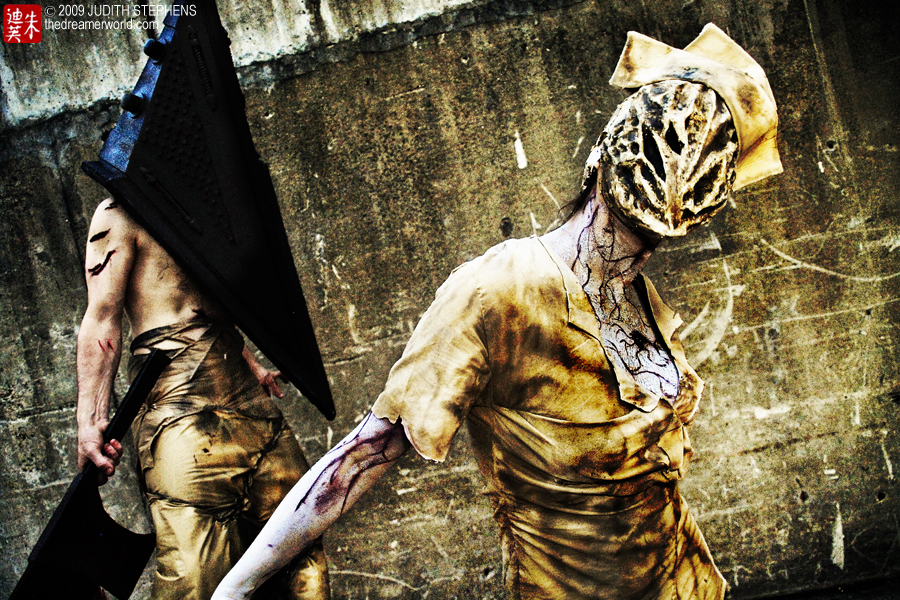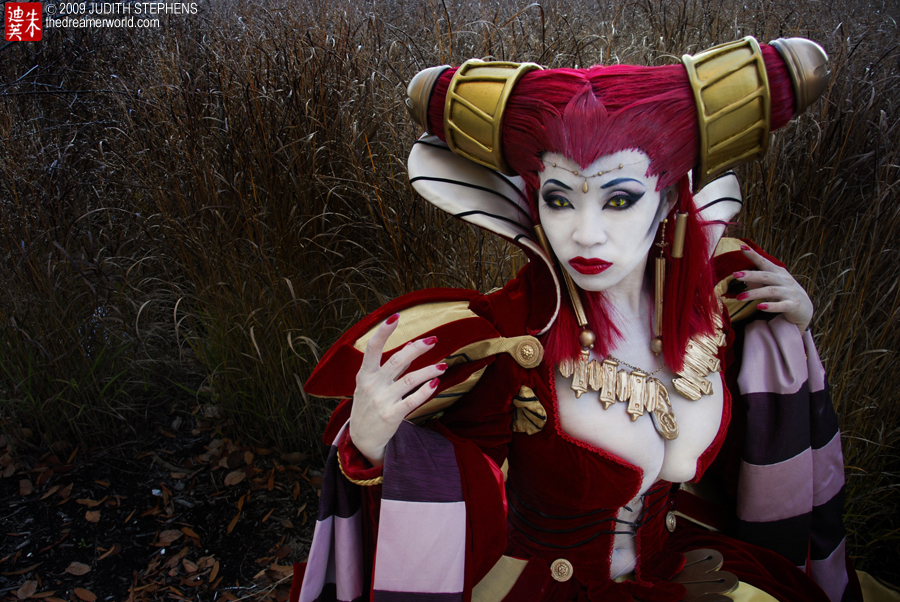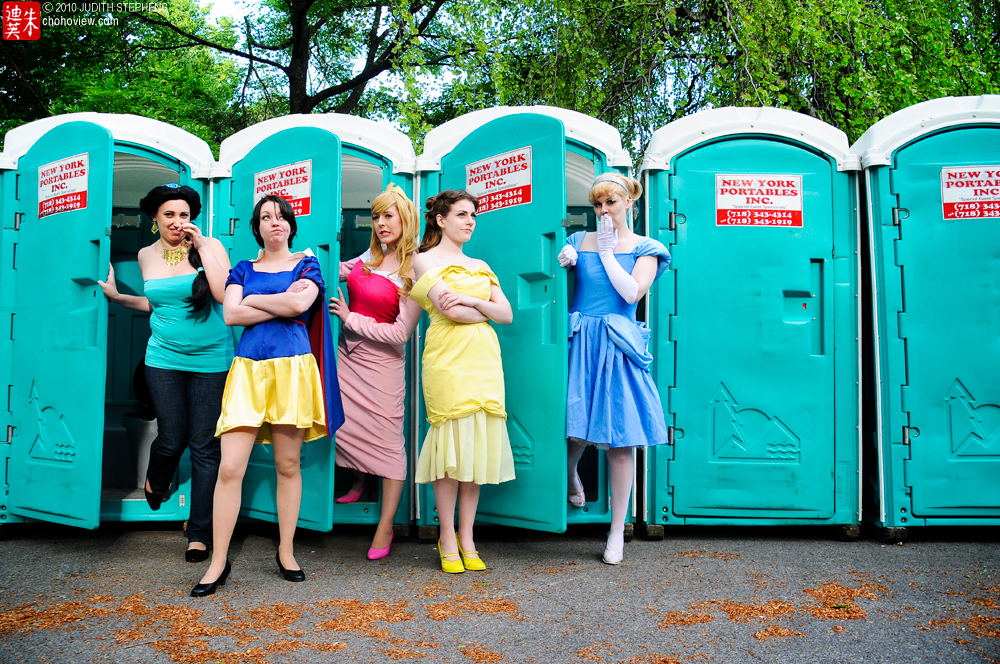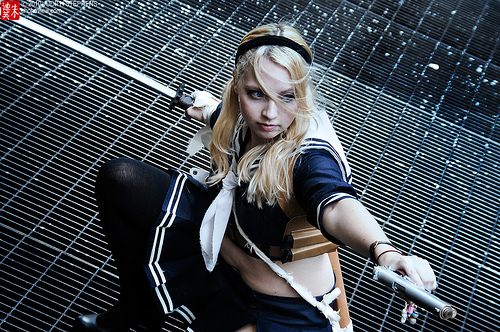MARVELOUS: The Photography of Judith Stephens
Judith Stephens is currently employed at Marvel as their Web Designer and writes about costuming and cosplay on Marvel’s website:
How were you first involved with cosplay and photography? What anime, video game and/or manga inspired you greatly?
Photography has always been my first love. I grew up with my father constantly taking photos, mostly of trains, but always with a camera. In high school, I seriously began taking photos, and from there I just didn’t stop. For college, I moved to NYC to attend Parsons, where 4 years later I received my BFA in Photography. Along the way, I became engrossed in Asian cultures and thus through friends, anime and manga. I attended my first convention, AnimeNorth, in 2004 where I took these rather grainy black & white shots of cosplayers and the con. At the time, I found it interesting but it wasn’t until Otakon 2006 that I discovered that there was this community within the cosplay world, and I wanted to be a part of it.
I posted on Cosplay.com that I was a new photographer to the scene and wanted to meet people. From there everything just fell into place. Each convention I met more and more cosplayers, and after each con, my photography grew more into the style I’m known for now.
I’m a big fan of mecha anime & manga, such as Gundam, Full Metal Panic and Bakuretsu Tenshi. I love the mix of technology with the “simple life” such as high school or normality. Plus, anime like Ghost in the Shell, that have a deeper impact or meaning are so stimulating to watch.
As for being inspired, I love horror and thriller shows and video games. I love being scared and finding that unique angle that is awkward and beautiful at the same time. Also, I’m a sucker for anything historical: Victoria, Edwardian, Rocco, 20’s, 30’s, etc. Depicting a historical scene through costumes is something almost spiritual for me.
Cosplaying has been described as a culture of its own. Do you agree and why? What evolutions have you witnessed in the art of cosplay from the time you were first exposed to it to today?
Definitely. It was the community and culture that first drew me to start shooting cosplay. With over 100 conventions a year, thousands of attendees and a large internet network, its no longer a niche, but a full blown culture. And it’s rather taking the world by storm. We have our own isms, unique ways of communicating and a worldwide community. Even though cosplay is represented distinctly differently from country to country, all have the same origins and basic concepts.
Through the years, I’ve watched the craft become more significant, but that commissioned and bought costumes are acceptable and accessible. Cosplay supplies such as wigs, shoes, and props are now easily found via the internet and the growing community. Harl, the owner of Arda Wigs, uses suggestions to order more and more character inspired wigs. Other dealers, like Yaya Han and Limebarb, offer cosplay accessories (wigs, tails and ears) for sale online and at cons. It’s through these means that cosplayers now usually surpass regular attendees, and are part of the draw for many attendees.
As there are more and more cosplayers each year, photographers are growing. Years ago, a cosplayer rarely could find someone to shoot their costume, private shoot or regularly. Now there are hundreds photographers, myself include, that attend cons across the country and world, plus offer shoots outside conventions. Not to mention the growing trend of video and steady-cam.
What are some of the challenges cosplayers or cosplay art face now?
Basic things like time and money are usually are the forefront of most cosplayers minds. For 95% of the community, cosplay is not a job or way to live by, and its finding the middle ground between “life” and fun. I also see that there are many cosplayers that like to keep their private and work lives separated. As open as our country is, dressing up as a character from an anime can still be seen as negative when applying for a job or even keeping one. I’m fairly lucky that I work at the company that is not only interested in my cosplay, but that allow me to write and photograph it for the site.
What is your advice about posing and picture-taking for cosplayers?
General advice: Keep taking photos. With photography its about knowing your camera, the light, and how to see through your viewfinder. You’re camera should be an extension of yourself, and you should be able to react with the situation.
Posing. The more you work with models and cosplayers you’ll start to see what works and what doesn’t. You want to make them look and feel attractive, but you also want a great photograph. It’s a happy-median that’s hard to find, but is totally possible. I’ve been shooting models for over 10 years, so now its fairly easy to help a model move into a pose that works. There are simple things to begin with: shooting up (the nose) tends not be a fairly attractive shot, shooting down makes people look younger and thinner, simple moving of the head and neck can change the shot entirely, if the model is uncomfortable it’ll most likely show in the photo. Also, for groups, pay attention to height, color and make sure you can see everyone. If you can, work with props as they make the model comfortable plus it gives you something to work with as a photographer.
You have been photographing cosplayers for over ten years. What have you learned the most during those ten years? What were some of the challenges you faced in your shoots?
How to photograph people. Most cosplayers aren’t models, nor do many have skills in posing for the camera. Its through shoots after shoots that I’ve learned how to work with inexperienced and experienced cosplayers. How to pose them. How to make them comfortable. How to work with the location. And how to get the shot. Also how to shoot the same costume over and over again but still make each shoot unique and different.
Another important skill I’ve learned is how to shoot with other photographers. I’ve never been one to deny a shared shoot, but over time I’ve cultivated a way to move and groove with other photographers so we can both get the shots we want.
Challenges can come in lighting, weather, lateness, and even groups. As a photographer, you just have to go with it. If it starts raining, there are always other locations, also the wet ground can prove for some great shots. And shooting groups, from three to 15 to even 50 cosplayers, is a trial in getting everyone organized and making sure to get the shot.
I shoot with D300s and two lenses, 18-200mm and 30mm, plus my SB-80 flash. I tend to prefer to shoot with natural light and no added equipment, but I do sometimes use strobes if the situation requires it. I edit my photos using Browse (and sometimes LightRoom) with RAW batch edit, and then open each in Photoshop for more detail editing. Some photos require basic tweaks but others I can spend up to if not more then an hour on. As of late, I consistently add contrast and vibrancy to each photo, but I do also try to match the mood and lighting from the show on the photos. Such as for the Sucker Punch photos from AB, I added different filters to match the contrast and color of the movie.
Do you work with any themes in your shots?
Yes and no. Really each shoot is different as each cosplayer reacts uniquely in front of the camera, plus the costume, location and lighting. There are some shoots I go in with an idea or theme, and sometimes it goes well, but other times I find a location or shot that just vibes perfectly. Also each cosplayer are looking for something different. Some just want a shot of their cosplay, others want to react a scene from the show, or even others just want to goof off in costume. Each shoot is unique and that’s what makes it so much fun.
You published your own book on cosplay called Cosplayers 2010. Tell us about it. How did it come about? What can readers and cosplay fans expect to see in this book?
Cosplayers 2010 is my 3rd book in the series I’ve self-published about Cosplay. The first book came about with my original goal of being able to publish a book of my cosplay photography. I decided to self-publish my own book so I could have something physical to send around to publishers. I quickly realized that I could offer the book for purchase to cosplayers, and that they were excited to be featured. Each book is an edit of about 100 photos taken throughout the year at conventions, events and private shoots, and feature cosplayers and costumers from around the world. I also try to include every cosplayer I shoot throughout the year, but also aim to showcase what I feel are my best shots. Each year when I receive the first copy hot off the press, I realize how lucky I am to have the friends and the life I lead.
———————————————————————————————
Judith Stephens’ TOP THREE PERSONAL FAVORITE PHOTOS

Silent Hill Nurse & Pyramid Head – AnimeCentral 2009
http://www.flickr.com/photos/judithstephens/3531260557/in/set-72157614994970621
Cosplayers: AshGroovy & VoXtheFoX
Equipment: D200 with 18-200mm lens and sb-80 flash
The Shoot: I believe this is the set that sort of blew up my photos on the internet. The actual shoot was maybe 15 minutes long as we had to rush with the sun setting and as it was about to rain. The two cosplayers had stopped by the Cosprints photobooth earlier in the day and I approached them for a private shoot. After fixing up their make-up, I took them around the back of the con hotel to this location, which was a service driveway that led to a garage door for the bottom floors of the hotel. The walls were these amazing raw cement and I set them up and they just did their thing for me and my camera.
Editing: These are some of my more highly-processed photos. I used an array of layer styles, including curves with overlay & colorburn, and basically painted in areas for each layer. I tried to create a mix of shadowing and high-contrast but without losing details in the whites and blacks.

Carmilla From Vampire Hunter D – AnimeUSA 2009
http://www.flickr.com/photos/judithstephens/4128698365/in/set-72157614994970621
Cosplayers: Yaya Han
Equipment: D200 with 18-200mm lens and sb-80 flash
The Shoot: Yaya & Anna, who had won the Yume Prize from NYAF a month earlier, were gracious enough to don their winning cosplays on Sunday at AnimeUSA. I was one of at least 5 photographers who were at the shoot, but I had wanted to grab a few shots of both outside, as lighting and location were more interesting. For this shot, Yaya is actually kneeling here in some tall grass next to the con hotel with mid-day sun.
Editing: This photo has over 20 layers which help create a moon-lit setting, pull out the color in her eyes and costume, and smooth out the lighting on her.

Disney Princesses – Sakura Matsuri at Brooklyn Botanical Gardens 2010
http://www.flickr.com/photos/judithstephens/4571510682/in/set-72157625581691197
Cosplayers: Moonlessgarden, Kiwikiwi-black, Windaria, g0N3Morganna, Sadwonderland
Equipment: D300s with 18-200mm lens and sb-80 flash
The Shoot: This is one of those crazy ideas I always have when shooting. We had already been shooting for about 30min or so, when I asked if they were willing to do a fun-shot in front of the port-o-potties. We had to wait for a few for enough to be free them to jump into the frame without any bystanders, and well, you can imagine the smell. The ladies stuck around just long enough for me to get the shot before dashing away.
Editing: This is an example of my basic editing, which features a vibrance and overlay layer to pull out the color and throw in some high-contrast.
*****
If you want to see more of her work you can check out Judith Stephens’ main site at www.chohoview.com. You can also follow her at flickr: http://www.flickr.com/photos/66937003@N00/sets/ and twitter: http://twitter.com/#!/OMG_Dj_Judy. You can also purchase her book here.











